Home to more than 200 towers in the Middle Ages, Ascoli Piceno is accessible, manageable and rich in history and culture. Jane Keightley takes the tour…
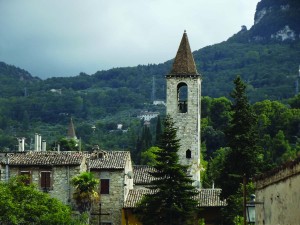 Travelling through southern Le Marche I could not help wondering why the area is not as popular with tourists as neighbouring Tuscany and Umbria. The area is blessed with beautiful hill towns as far as the eye can see; it has the amazing Sibillini Mountains on one side and the beautiful beaches of the Palm Riviera on the other. The peaceful atmosphere is part of its charm. It is easy to imagine coming here and living like a local. It is not like the tourist hotspots where everybody speaks English. Here you have to use whatever Italian you have, rusty or otherwise, which makes it all so much more fun.
Travelling through southern Le Marche I could not help wondering why the area is not as popular with tourists as neighbouring Tuscany and Umbria. The area is blessed with beautiful hill towns as far as the eye can see; it has the amazing Sibillini Mountains on one side and the beautiful beaches of the Palm Riviera on the other. The peaceful atmosphere is part of its charm. It is easy to imagine coming here and living like a local. It is not like the tourist hotspots where everybody speaks English. Here you have to use whatever Italian you have, rusty or otherwise, which makes it all so much more fun.
THE BALCONY OF PICENO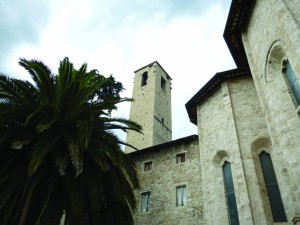
I was in Southern Le Marche to visit Ascoli Piceno, the capital of the province, but before I got there I wanted to explore some of the many beguiling hill towns of the region. I began my brief tour of the area by visiting Ripatransone. It has been given the title of ‘Balcony of Piceno’ – and rightly so as you can gaze out towards the Adriatic, and inland towards the mountains, with so many hill towns dotted in between it is impossible to count them all. Its historical centre boasts buildings dating back to the Middle Ages, Renaissance and baroque times, but it is best known for having ‘the narrowest street in Italy’. At just 43 centimetres wide it is just an alley really, but it attracts the visitors who enjoy posing for a photograph squeezed tightly between its walls. When you have done posing, make time for a visit to the Museum of Rural Life and Handicrafts, and the Potters museum.
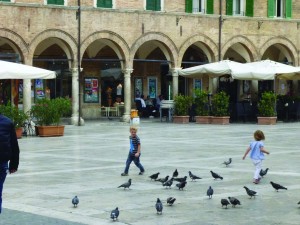 OFFIDA
OFFIDA
Still moving onwards towards Ascoli Piceno I decided to spend a few hours in Offida, a town famous for its lace-making. As I approached the entrance to the old part of the town I stopped to admire the bronze monument which shows three generations of lace-makers. I then followed the main street, passing real live lace-makers in their doorways busy working on their small wooden bobbins. When I reached the town’s main square, Piazza del Popolo (which is actually triangular in shape) I was impressed by the Palazzo Communale, one of the most beautiful town halls in Le Marche. Passing under its porticos I ventured inside to discover its hidden treasure, the Serpente Aureo Theatre. Built in the 18th century, it is a truly amazing example of the many beautiful little theatres that are scattered all over Le Marche. On the west side of the square is the church of the Collegiata. Venturing in I discovered a vast interior decorated with stuccoes and, under the high altar, the body of Saint Leonard, the patron saint of Offida. Following the via Roma to just outside the town, the church of Santa Maria della Rocca stands high on a wedge-shaped rocky spur. Its interior is quite minimalist in comparison to the Collegiata.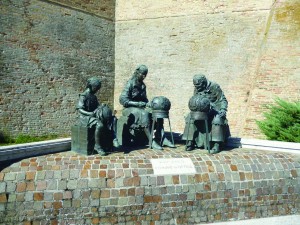
Coming back down into town I decided I could not leave Offida without visiting the Lace Museum. Some of the exhibits belong to the museum and some belong to the lace-making inhabitants of Offida, who take it in turns to lend the museum some of their best works so the display is always changing. One of the exhibits is a lace dress made for Naomi Campbell to wear at a fashion show in London. Hungry now after all my exploring I went in search of sustenance. I thought I would try the local speciality, chichi ripieno, which is a flat-bread stuffed with tuna, anchovies, artichokes in oil and pickled peppers – and very tasty it was too. I was then offered one of the local cakes, which are called funghetti because of their mushroom shape. They are made of flour, sugar, water and aniseed – and are also delicious.
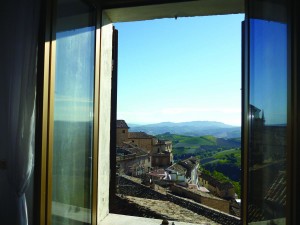 SIGHTS AND ADVENTURES
SIGHTS AND ADVENTURES
The next day I headed off to Ascoli, looking forward to a day filled with new sights and adventures. I had heard that the centre of Ascoli was particularly beautiful with its two main squares, Piazza Arringo and Piazza del Popolo, so I decided to visit them before I did anything else. I started off in Piazza Arringo, so named because in the Middle Ages it was the place for public meetings – arringo is the Italian word for harangue. It is now the main cultural centre of the city and there you will find the main museums, the Town Hall, the Bishop’s Palace and the Cathedral. At the east end of the square stands the Duomo di Sant’Emidio, who was the first Bishop of Ascoli, the Patron Saint of the city and its protector against earthquakes. It was first built in the 4th century with extra bits added on throughout the years. On the left of the Cathedral stands the Baptistery, an octagonal construction datingfrom the early Middle Ages and reconstructed in the 12th century. Close to the Cathedral stands the Bishop’s Palace, which houses the Museo Diocesano, which has a varied collection of sacred art collected from churches and monasteries in the area. Next to the Bishop’s Palace is the Arengo Palace, which is the home of the Town Hall and Municipal Art Gallery. The Gallery contains one of the most important art collections in the region and has works by Crivelli, Van Dyck and Rembrandt and a stunning 13th century Papal Cope worn by the Ascoli-born Pope Nicholas.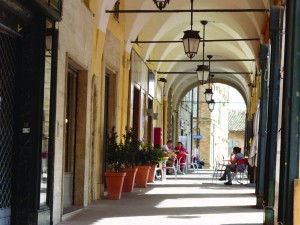
After my culture fix, I felt the need for a bit of retail therapy and some food to quieten my rumbling tummy so I went to find the other famous square of Ascoli, Piazza del Popolo. Known as ‘the Drawing Room’ of Ascoli, it takes your breath away as you enter it. The travertine tiles that the Piazza is paved with positively gleam and it is full of stylish shops, cafés and restaurants. It is the ideal spot for people watching, and what better place to do it than the famous Art Deco Caffè Meletti, founded in 1907 and famous for its Anisetta liqueur. Refreshed and raring to go again I explored the rest of the Piazza. There are three important buildings to look out for, which represent the three powers of the time: political with the Captain’s Palace, religious with the Church of San Francesco, and commercial with the Merchant’s Lodge.
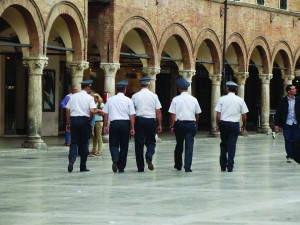 I wanted to explore the rest of Ascoli but with my aching feet in mind I returned to the Piazza Arringo, where, near the Cathedral was a motorised tourist train called the Ascoli Explorer touting for business. The narrow streets of Ascoli are not big enough for the usual tourist buses and this is the ideal way of discovering Ascoli’s less well known nooks and crannies. Half the fun is squeezing round the corners and negotiating obstacles such as parked trucks being loaded up. This being Italy there is usually a loud exchange of views until the way has been cleared.
I wanted to explore the rest of Ascoli but with my aching feet in mind I returned to the Piazza Arringo, where, near the Cathedral was a motorised tourist train called the Ascoli Explorer touting for business. The narrow streets of Ascoli are not big enough for the usual tourist buses and this is the ideal way of discovering Ascoli’s less well known nooks and crannies. Half the fun is squeezing round the corners and negotiating obstacles such as parked trucks being loaded up. This being Italy there is usually a loud exchange of views until the way has been cleared.
Ascoli is often referred to as the city of 200 towers but Frederic ll ordered 90 of them to be knocked down and many of the others have collapsed so there are only about 50 left to look out for. Watch out for the Torre Gemelli – the Twin Towers – separated by a narrow building on via delle Torre, and also Ercolani Tower on via dei Soderini. Also watch out for an amazing selection of Romanesque churches as you travel around.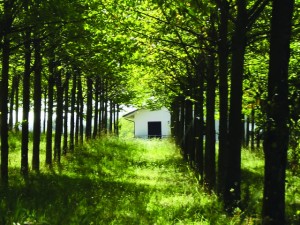
Having had a whistle stop tour of Ascoli on the little tourist train I felt I needed to come back another time to explore all the lesser known attractions of Ascoli on foot and in more detail. It was a joy to walk (and ride!) around this beautiful city where the locals are so friendly and there are no crowds. This area of southern Le Marche is a region of Italy that really is not to be missed.
